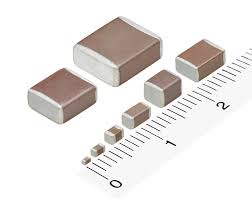What Makes Printed Copper an Excellent Material for Microelectronics Manufacturing?
By Emily Newton, Editor Revolutionized.com
The microelectronics industry faces mounting pressure amid rising product demands and growing environmental concerns. Manufacturers must find ways to produce higher volumes of more functional electronics while managing end costs and sustainability. Balancing all of these factors can be challenging, but rethinking the materials you use can go a long way.
Printer copper has recently emerged as an ideal material for microelectronics manufacturing. New technological breakthroughs allow manufacturers to print copper the same way they would with silver, achieving the primary benefits of both printed silver and traditional copper circuitry. This innovative approach offers several critical advantages.
Cost Efficiency
Printed copper’s most obvious benefit is its cost-effectiveness. Even amid rising prices, copper costs around $4.25 per pound on average, compared to more than $20 per ounce for silver. That makes copper less than 2% of the price of silver, more than justifying any marginal losses in conductivity.
Manufacturing costs around printed copper are also lower than those required to create silver circuits. Silver requires expensive materials to attach traces to the PCB, whereas printed copper can use conventional solder paste. Consequently, printer copper’s cost savings extend to other materials, not just the circuitry itself.
Printing copper also yields financial benefits over conventional production methods. Copper printing is additive, so it wastes less material and takes less time than traditional, subtractive methods of manufacturing copper circuits, leading to lower production expenses.
Manufacturing Efficiency
The manufacturing process for printed copper circuits is also faster than traditional methods. Subtractive manufacturing is a time-intensive process, as it requires several steps of material preparation, cutting, cleaning and application. Additive methods, by contrast, apply circuity directly to the substrate with minimal preparation required.
Printed copper requires no chemical etching or treatment prior to printing. Printers also work far faster than conventional electrodepositing methods, so even if they did need more pre-processing, lead times would still be minimal. These time savings are what drove many manufacturers to silver, but applying them to copper lets you save both time and money.
Manufacturers can combine copper printing with other high-efficiency equipment to maximize these savings. Using oil-free air compressors to clean circuit boards, for example, reduces maintenance needs and material waste to make the rest of the manufacturing process less prone to disruption.
Sustainability
As the threat of climate change grows increasingly prevalent, many electronics manufacturers face pressure to become more sustainable, too. The industry’s reliance on energy-intensive processes and environmentally harmful mining practices exacerbate these concerns. Becoming truly sustainable will take a complex, multi-pronged approach, but printed copper can help in that journey.
Copper electrodeposition requires harmful chemicals that may leech into the environment and waste a lot of material. By printing copper circuitry instead, you can avoid these hazardous chemicals and minimize waste, ensuring you can mine less copper to begin with.
Silver printing offers similar benefits, but 32% of global copper comes from recycled sources, far more than recycled silver volumes. Consequently, it’s easier to switch to more eco-friendly sources of copper than silver. Manufacturers can then embrace sustainability faster.
Reliability
Microelectronics manufacturers must also consider copper’s reliability as a conductor. Silver is more conductive than copper, but only by about 7%, and copper is a more resilient metal in real-world conditions, making it better for practical use.
Copper is highly resistant to electromigration, which silver suffers from. This electromigration can lead to voids forming in the circuitry, stopping the device the PCB powers from working correctly. Silver also oxidates more quickly, especially in humid or acidic environments, requiring extra materials or unique design considerations for it to be viable in electronics.
Printed copper pairs copper’s reliability with the efficiency of traditionally silver-focused printing technologies. As a result, you can use it to boost production volumes without sacrificing the cost or quality of the end product. As Internet of Things (IoT) applications grow, placing electronics in more extreme environments, that reliability becomes increasingly valuable.
Ease of Implementation
Despite being a relatively new process, copper circuit printing is relatively easy to implement into existing workflows. The newfound viability of printed copper stems mainly from novel copper inks, not necessarily printing systems. Consequently, some facilities can switch over to printed copper without requiring new infrastructure.
This ease of implementation is all the more advantageous when considering current workforce shortages. Over three-quarters of American manufacturers say they’ll face ongoing difficulty attracting and retaining talent. Amid this gap, disrupting an already strained workforce by bringing in new machinery requiring re-training will significantly hamper productivity. Being able to use the same equipment prevents that scenario.
Not having to install new equipment also lowers production costs compared to the alternative. Manufacturers can change over to these new methods with minimal expense and disruption, ensuring they experience larger returns in a shorter timeline.
Supply Chain Resilience
Finally, printed copper can help bolster supply chains. Microelectronics supply chains have faced many challenges amid disruptions like the ongoing semiconductor shortage, so many are restructuring these networks. Switching to a more widely available material provides needed resilience.
Compared to metals like aluminum, copper is rare, but it’s far more abundant than silver, the only metal more conductive than it. Copper accounts for an estimated 0.006% of the earth’s crust, compared to silver’s 0.0000075%. This relative abundance means supply shortages and resulting price hikes or delays are less likely and will be less extreme.
Copper also accounts for 33% of total metal mine value in the U.S., more than any other metal. For U.S. microelectronics manufacturers, that means this material is easier to source domestically than other metals, further decreasing the likelihood of supply chain disruptions.
Printed Copper May Be the Future of Microelectronics
As these benefits highlight, printed copper is often better than both printed silver and electrodeposited copper circuitry. In light of rising demands, more microelectronics manufacturers may want to consider this potential.
Printed copper is cost-efficient, reliable, easy to implement and opens the door for sustainability and supply chain improvements. Electronics producers can’t afford to overlook these benefits. As the industry recognizes this value, this circuit production method could become the new standard, dramatically changing the sector as a whole.












